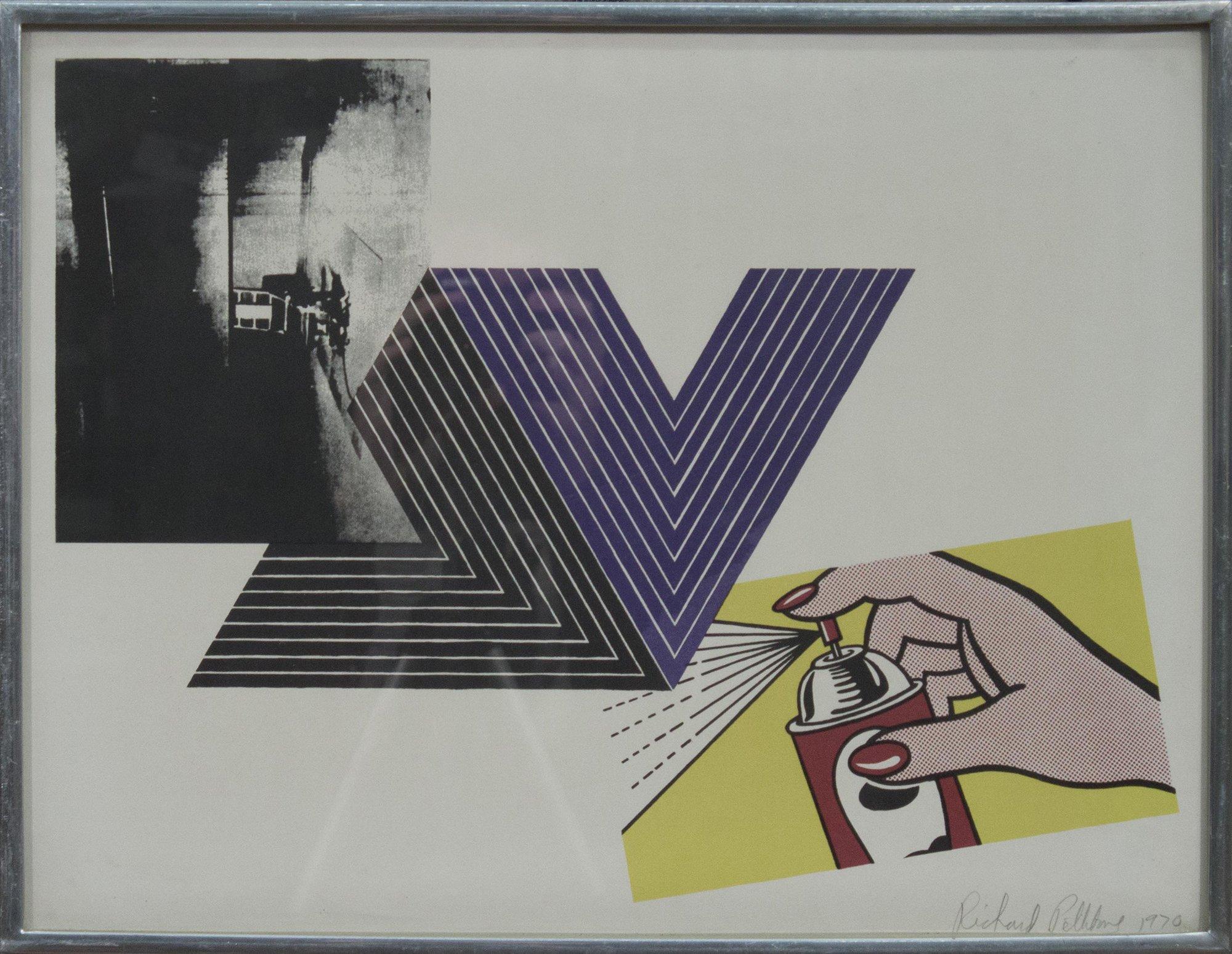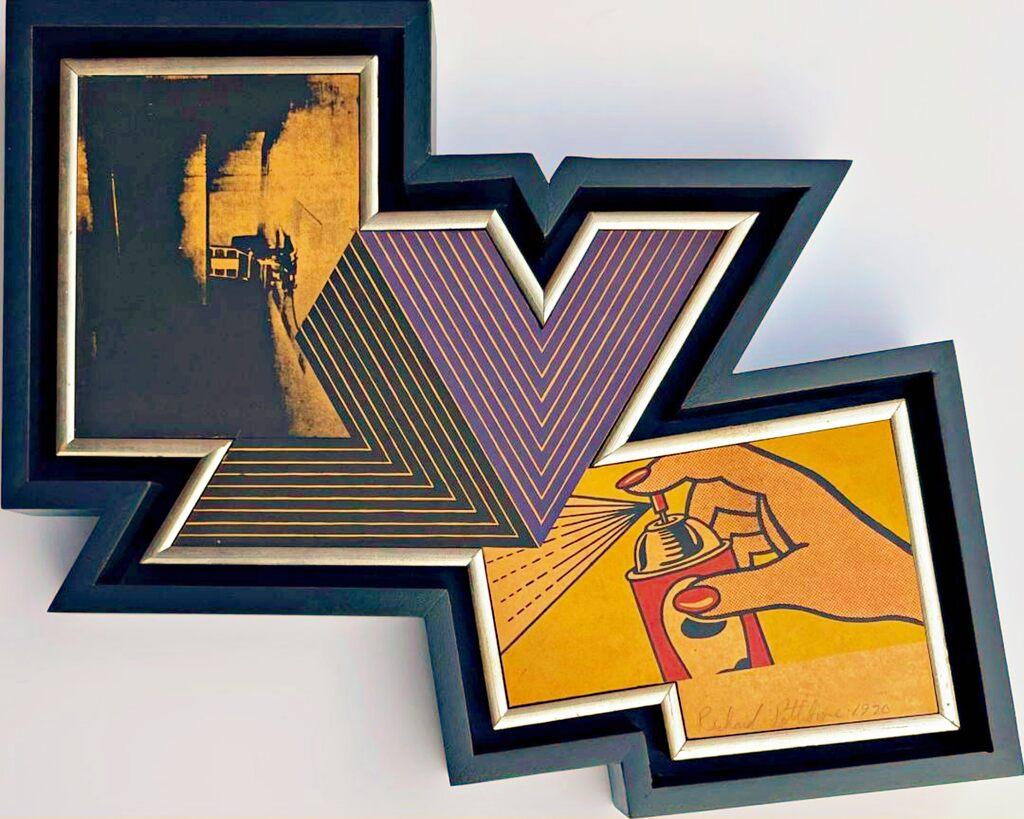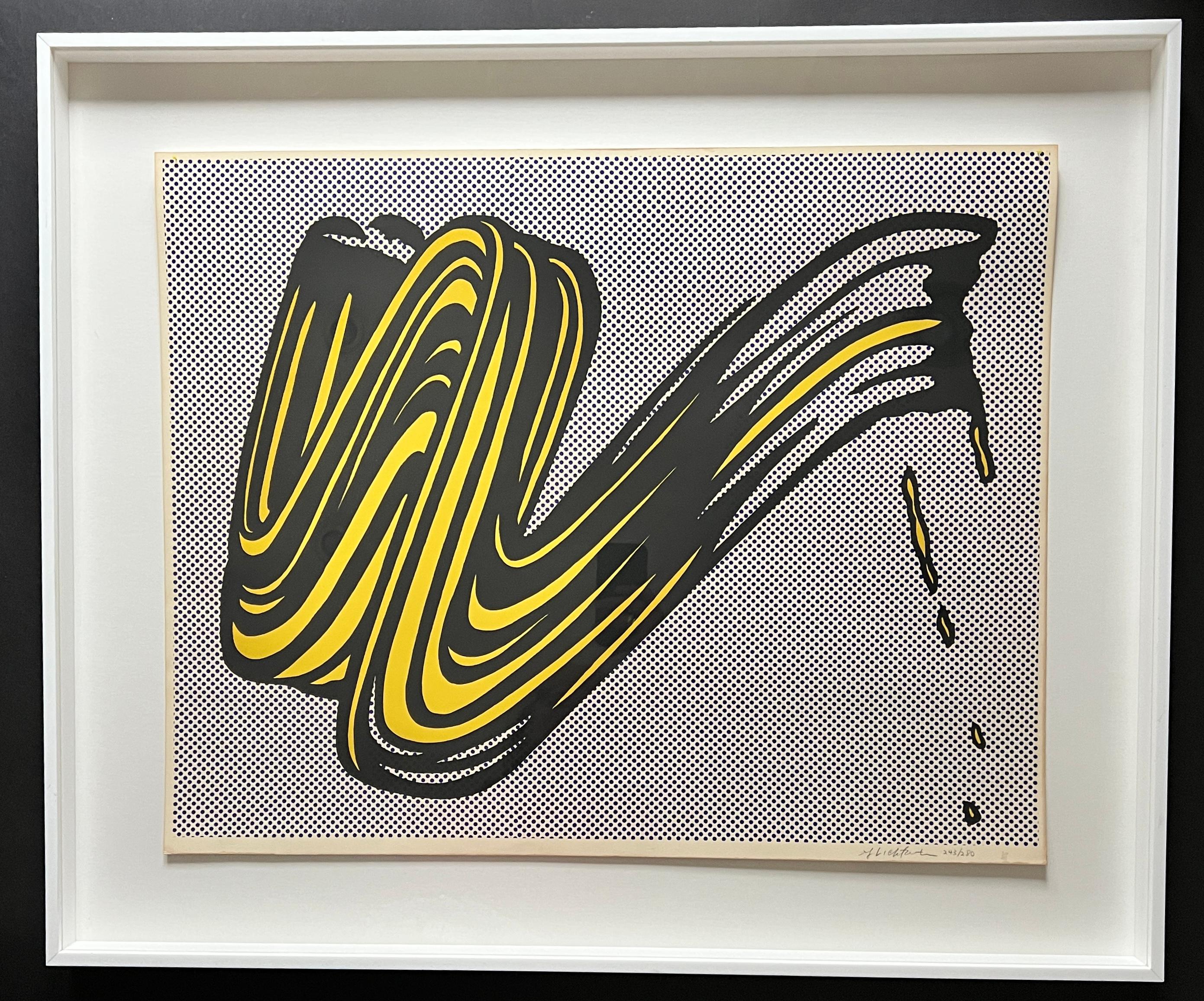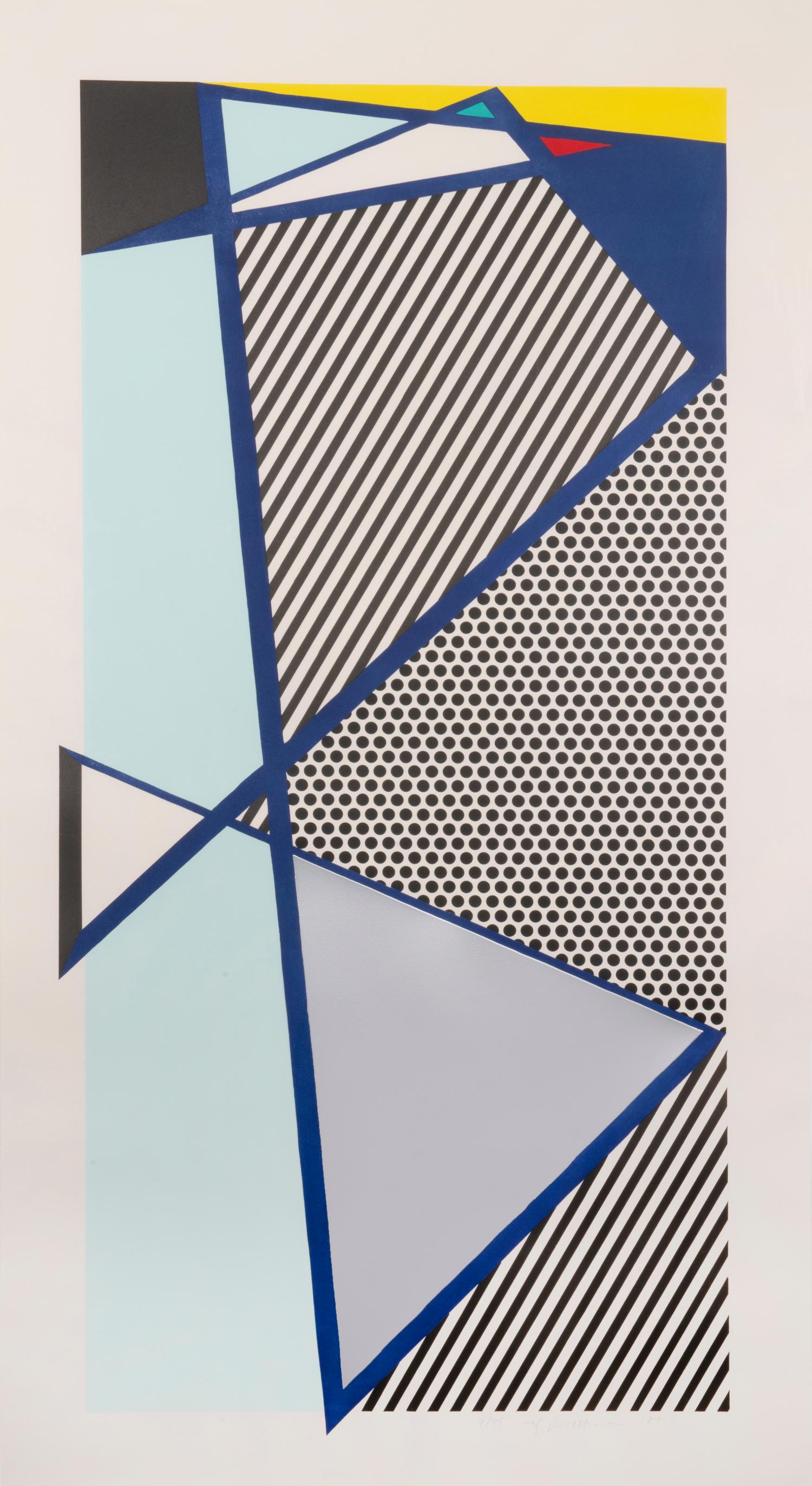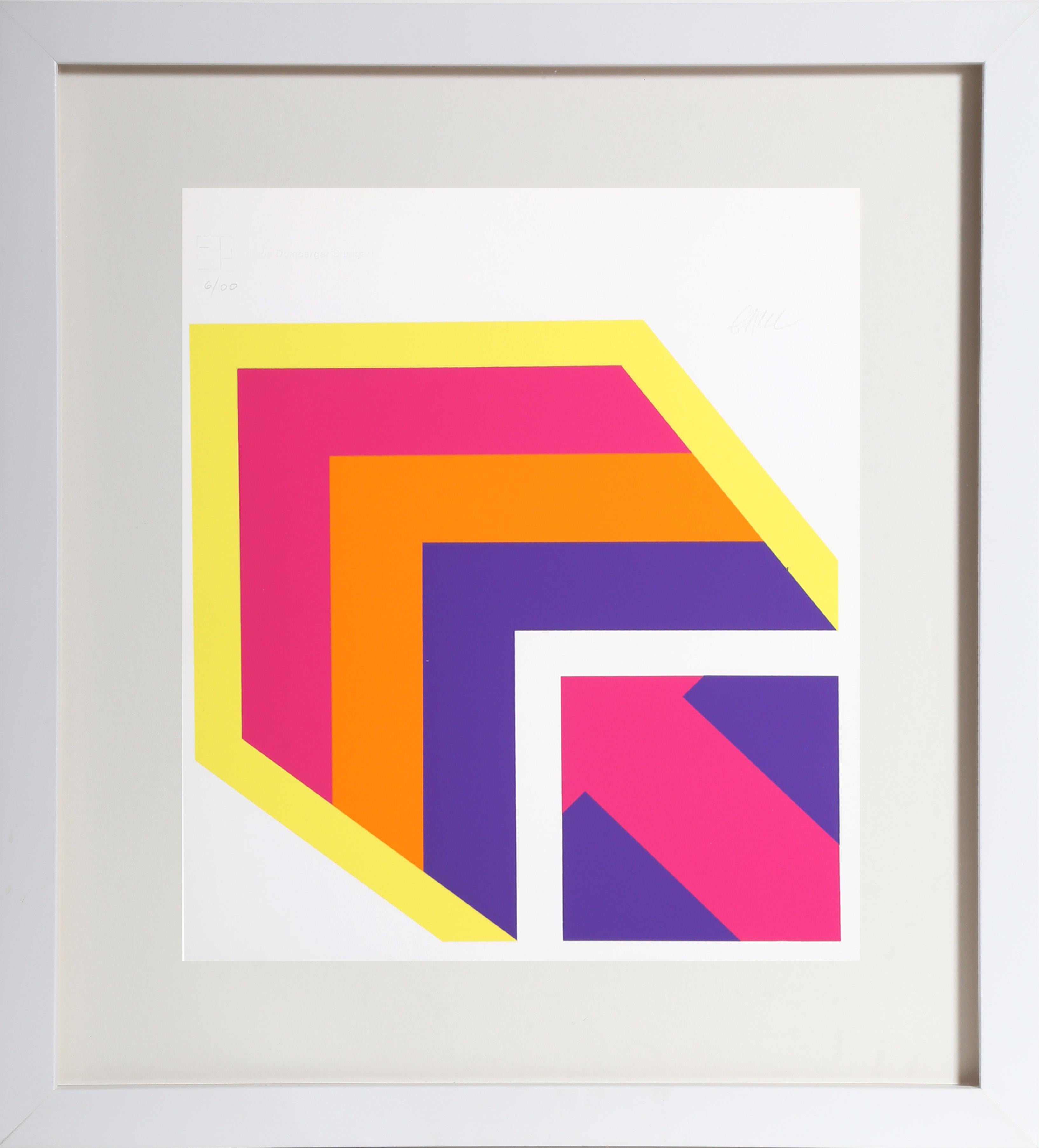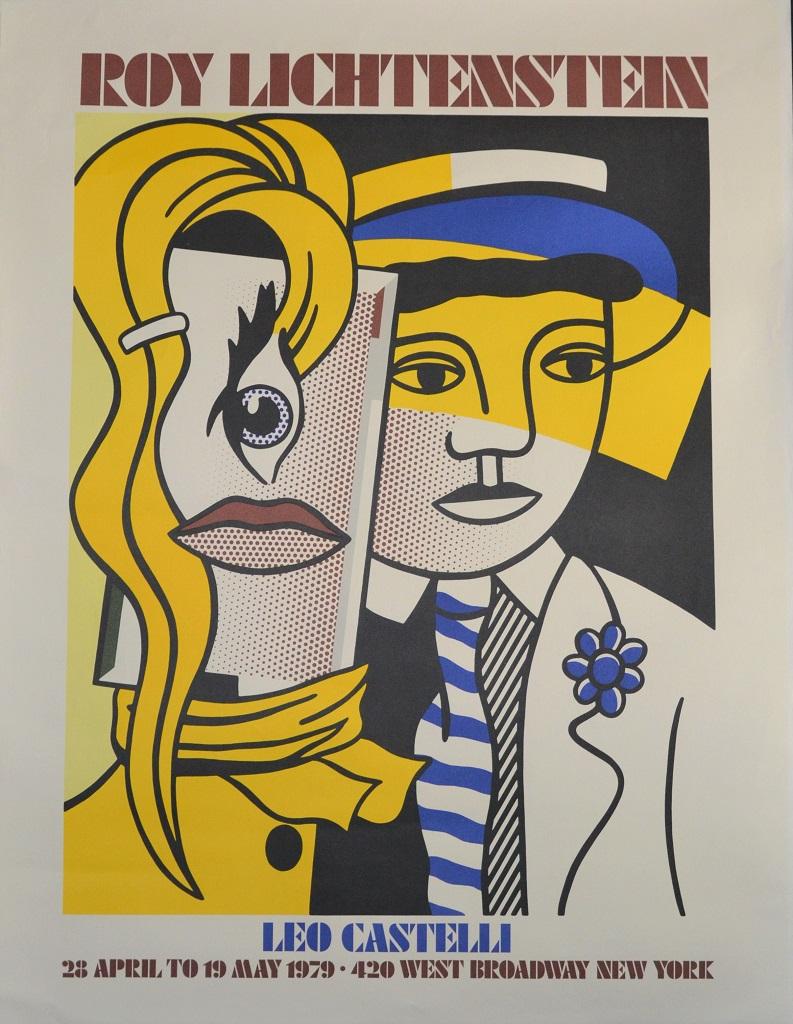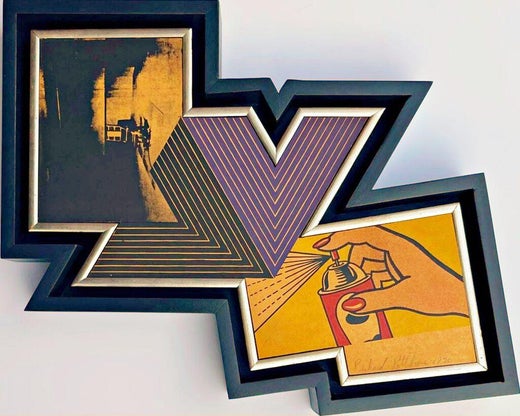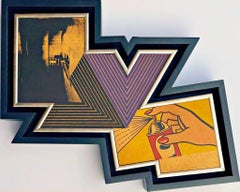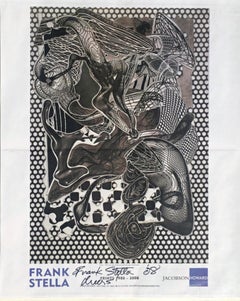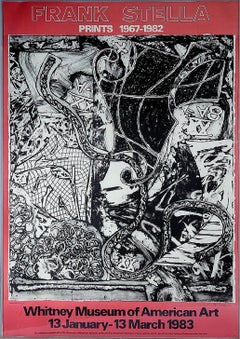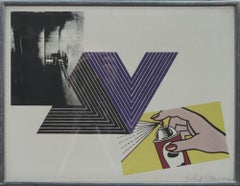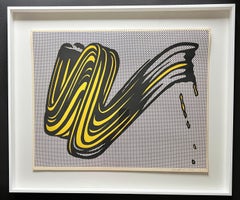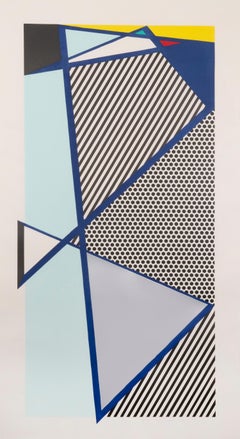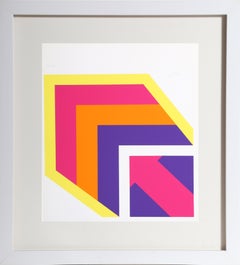Items Similar to Pop Art Appropriation Print: Andy Warhol, Frank Stella, Roy Lichtenstein, SIGNED
Want more images or videos?
Request additional images or videos from the seller
1 of 8
Richard PettibonePop Art Appropriation Print: Andy Warhol, Frank Stella, Roy Lichtenstein, SIGNED1970
1970
$7,000
£5,467.55
€6,198.13
CA$10,035.28
A$11,008.16
CHF 5,759.64
MX$131,019
NOK 72,747.75
SEK 68,238.69
DKK 46,291.08
About the Item
Richard Pettibone
The Appropriation Print: Andy Warhol, Frank Stella, Roy Lichtenstein, 1970
(Andy Warhol's Electric Chair, Frank Stella's Empress of India and Roy Lichtenstein's Spray)
Silkscreen in colors on smooth wove paper
Pencil signed and dated 1971 on the front
Frame included:
Elegantly floated and framed in a white wood frame under UV plexiglass in accordance with museum conservation standards
Measurements:
frame: 15 7/8 x 19 3/4 x 1 3/4 inches
sheet: 12 1/4 x 16 inches
This is one of Richard Pettibone's most iconic, popular and desirable prints done in 1970 - during the most influential era of the Pop Art movement. This homage to Andy Warhol, Frank Stella and Roy Lichtenstein exemplifies the type of artistic appropriation he was engaging in early on during the height of the Pop Art movement - long before more contemporary artists like Deborah Kass, Louise Lawler, etc. followed suit. Pencil signed and dated recto. It was created in limited edition - though the exact number is not known.
More about RIchard Pettibone:
As a young painter, Richard Pettibone began replicating on a miniature scale works by newly famous artists, and later also modernist masters, signing the original artist’s name as well as his own. His versions of Andy Warhol’s soup cans, Jasper Johns’ flags, Frank Stella’s black paintings, and countless more works by Roy Lichtenstein, Marcel Duchamp, Piet Mondrian, and Constantin Brancusi—all pocket-sized to evoke the intimacy of the model trains he loved as a child—incited considerable controversy. Pettibone is often seen has having paved the way for 1980s appropriation art, raising questions about the ownership of ideas and the nature of originality that are still debated today. Writing in The New York Times, Roberta Smith notes that something besides imitation prevails in his work: “formal rigor, the personalizing effects of scale and touch, faith in materials as carriers of artistic meaning and, above all, hard-nosed, even hypercritical reverence.”
- Creator:Richard Pettibone (1938, American)
- Creation Year:1970
- Dimensions:Height: 15.8 in (40.14 cm)Width: 19.75 in (50.17 cm)Depth: 1 in (2.54 cm)
- Medium:
- Movement & Style:
- Period:
- Condition:Ships framed.
- Gallery Location:New York, NY
- Reference Number:1stDibs: LU1745213480472
Richard Pettibone
Richard Pettibone was one of the pioneering artists to use appropriation techniques. Pettibone was born in Los Angeles, and first worked with shadow boxes and assemblages, illustrating his interest in craft, construction, and working in miniature scales.
(Biography provided by ArtWise)
About the Seller
5.0
Platinum Seller
Premium sellers with a 4.7+ rating and 24-hour response times
Established in 2007
1stDibs seller since 2022
462 sales on 1stDibs
Typical response time: 2 hours
- ShippingRetrieving quote...Shipping from: New York, NY
- Return Policy
More From This Seller
View AllRichard Pettibone The Appropriation Warhol, Stella, Lichtenstein, Unique Signed
By Richard Pettibone
Located in New York, NY
Richard Pettibone
The Appropriation Print Andy Warhol, Frank Stella, Roy Lichtenstein, 1970
Silkscreen in colors on masonite board (unique variant on sculpted board)
Hand-signed by artist, Signed and dated on the front (see close up image)
Bespoke frame Included
This example of Pettibone's iconic Appropriation Print is silkscreened on masonite board rather than paper, giving it a different background hue, and enabling it work to be framed so uniquely.
The Appropriation print is one of the most coveted prints Pettibone ever created ; the regular edition is on a full sheet with white background; the present example was silkscreened on board, allowing it to be framed in 3-D. While we do not know how many examples of this graphic work Pettibone created, so far the present work is the only one example we have ever seen on the public market since 1970. (Other editions of The Appropriation Print have been printed on vellum, wove paper and pink and yellow paper.)
This 1970 homage to Andy Warhol, Frank Stella and Roy Lichtenstein exemplifies the type of artistic appropriation he was engaging in early on during the height of the Pop Art movement - long before more contemporary artists like Deborah Kass, Louise Lawler, etc. followed suit.
This silkscreen was in its original 1970 vintage period frame; a bespoke custom hand cut black wood outer frame was subsequently created especially to house the work, giving it a distinctive sculptural aesthetic.
Measurements:
Framed 14.5 inches vertical by 18 inches horizontal by 2 inches
Work
13 inches vertical by 16.5 inches horizontal
Richard Pettibone biography:
Richard Pettibone (American, b.1938) is one of the pioneering artists to use appropriation techniques. Pettibone was born in Los Angeles, and first worked with shadow boxes and assemblages, illustrating his interest in craft, construction, and working in miniature scales. In 1964, he created the first of his appropriated pieces, two tiny painted “replicas” of the iconic Campbell’s soup cans by Andy Warhol (American, 1928–1987). By 1965, he had created several “replicas” of paintings by American artists, such as Warhol, Roy Lichtenstein (1923–1997), Ed Ruscha (b.1937), and others, among them some of the biggest names in Pop Art. Pettibone chose to recreate the work of leading avant-garde artists whose careers were often centered on themes of replication themselves, further lending irony to his work. Pettibone also created both miniature and life-sized sculptural works, including an exact copy of Bicycle Wheel by Marcel Duchamp (French, 1887–1968), and in the 1980s, an entire series of sculptures of varying sizes replicating the most famous works of Constantin Brancusi (Romanian, 1876–1957). In more recent years, Pettibone has created paintings based on the covers of poetry books by Ezra Pound, as well as sculptures drawn from the grid compositions of Piet Mondrian (Dutch, 1872–1944). Pettibone straddles the lines of appropriation, Pop, and Conceptual Art, and has received critical attention for decades for the important questions his work raises about authorship, craftsmanship, and the original in art. His work has been exhibited at the Institute for Contemporary Art in Philadelphia, the Museum of Modern Art in New York, the Museum of Contemporary Art in Miami, and the Laguna Art Museum in Laguna Beach, CA. Pettibone is currently based in New York.
"I wished I had stuck with the idea of just painting the same
painting like the soup can and never painting another painting.
When someone wanted one, you would just do another one.
Does anybody do that now?"
Andy Warhol, 1981
Since the mid-1960s, Richard Pettibone has been making
hand-painted, small-scale copies of works by other artists — a
practice due to which he is best known as a precursor of appropriation art — and for a decade now, he has been revisiting subjects from across his career. In his latest exhibitions at
Castelli Gallery, Pettibone has been showing more of the “same”
paintings that had already been part of his 2005–6 museum retrospective,1
and also including “new” subject matter drawn from
his usual roster of European modernists and American postwar
artists. Art critic Kim Levin laid out some phases of the intricate spectrum from copies to repetitions in her review of the
Warhol-de Chirico showdown, a joint exhibition at the heyday
of appropriation art in the mid-1980s when Warhol’s appropriations of de Chirico’s work effectively revaluated “the grand
old auto-appropriator”.
Upon having counted well over a dozen
Disquieting Muses by de Chirico, Levin speculated: “Maybe he
kept doing them because no one got the point. Maybe he needed the money. Maybe he meant it when he said his technique
had improved, and traditional skills were what mattered.”
On
the other side, Warhol, in her eyes, was the “latter-day exemplar
of museless creativity”.
To Pettibone, traditional skills certainly
still matter, as he practices his contemporary version of museless creativity. He paints the same painting again and again,
no matter whether anybody shows an interest in it or not. His
work, of course, takes place well outside the historical framework of what Levin aptly referred to as the “modern/postmodern wrestling match”,
but neither was this exactly his match
to begin with.
Pettibone is one of appropriation art’s trailblazers, but his diverse
selection of sources removes from his work the critique of the
modernist myth of originality most commonly associated with
appropriation art in a narrow sense, as we see, for example, in
Sherrie Levine’s practice of re-photographing the work of Walker
Evans and Edward Weston. In particular, during his photorealist
phase of the 1970s, Pettibone’s sources ranged widely across
several art-historical periods. His appropriations of the 1980s
and 1990s spanned from Picasso etchings and Brancusi sculptures to Shaker furniture and even included Ezra Pound’s poetry.
Pettibone has professed outright admiration for his source artists, whose work he shrinks and tweaks to comic effect but, nevertheless, always treats with reverence and care. His response
to these artists is primarily on an aesthetic level, owing much
to the fact that his process relies on photographs. By the same
token, the aesthetic that attracts him is a graphic one that lends
itself to reproduction. Painstakingly copying other artists’ work by hand has been a way of making
it his own, yet each source is acknowledged in
his titles and, occasionally, in captions on white
margins that he leaves around the image as an
indication that the actual source is a photographic image. The enjoyment he receives in copying
is part of the motivation behind doing it, as is
the pleasure he receives from actually being with
the finished painting — a considerable private
dimension of his work. His copies are “handmade
readymades” that he meticulously paints in great quantities in his studio upstate in New York; the commitment
to manual labor and the time spent at material production has
become an increasingly important dimension of his recent work.
Pettibone operates at some remove from the contemporary art
scene, not only by staying put geographically, but also by refusing to recoup the simulated lack of originality through the
creation of a public persona.
In so doing, Pettibone takes a real
risk. He places himself in opposition to conceptualism, and he is
apprehensive of an understanding of art as the mere illustration
of an idea. His reading of Marcel Duchamp’s works as beautiful
is revealing about Pettibone’s priorities in this respect.
When
Pettibone, for aesthetic pleasure, paints Duchamp’s Poster for
the Third French Chess...
Category
1970s Pop Art Abstract Prints
Materials
Masonite, Pencil, Screen
Very Special Arts Gallery photolithograph (Hand Signed by Frank Stella) Framed
By Frank Stella
Located in New York, NY
Frank Stella (after)
Untitled, for the Very Special Arts Gallery (Hand Signed by Frank Stella), 1992
Photo lithograph and offset litho on thin board (hand signed)
Frame included:: el...
Category
1990s Abstract Expressionist Abstract Prints
Materials
Lithograph, Offset
$20,000 Sale Price
20% Off
London UK exhibition offset lithograph poster Hand signed by Frank Stella Framed
By Frank Stella
Located in New York, NY
Frank Stella
Frank Stella Prints 1980 - 2008 (Hand Signed), 2008
Offset Lithograph
Hand signed and dated on the front, in innk with inscription that read...
Category
Early 2000s Abstract Expressionist Abstract Prints
Materials
Lithograph, Offset
Frank Stella Hand Signed 93/100 Whitney Museum Lithograph Abstract Expressionist
By Frank Stella
Located in New York, NY
Frank Stella
Large Limited Edition Hand Signed Whitney Museum Print, 1985
Offset Lithograph
Hand signed, dated and numbered 93 from the edition of 100, lower left front
75 7/10 × 52 ...
Category
1980s Abstract Expressionist Abstract Prints
Materials
Lithograph, Offset
Frank Stella, Whitney Museum exhibited graphic work with Label, Signed/N, Framed
By Frank Stella
Located in New York, NY
Frank Stella
(Whitney Museum Exhibited) Shards IVA (Axsom 151), 1982
Lithograph & Silkscreen on Arches Cover Paper (Whitney Museum exhibition label verso of frame)
45 1/2 × 39 1/...
Category
1980s Abstract Expressionist Abstract Prints
Materials
Mixed Media, Lithograph, Screen
$32,200 Sale Price
30% Off
California Cool Pop Art Mixed media & lithograph hand signed 20/20, artist label
By Billy Al Bengston
Located in New York, NY
Billy Al Bengston
Cockatoo AAA Dracula, 1968
Lithograph , Zinc and Aluminum, in Silver-Violet, Yellow, Two Grays and Orange on uncalendered Rives paper
Frame included
signed faintly ...
Category
1960s Pop Art Abstract Prints
Materials
Mixed Media, Lithograph
You May Also Like
1970 'Appropriation print with Warhol, Lichtenstein
By Richard Pettibone
Located in Brooklyn, NY
This serigraph by Richard Pettibone, titled Appropriation, creatively unites iconic works by three of the most influential pop and minimalist artists: Andy Warhol, Frank Stella, and ...
Category
1970s Pop Art Prints and Multiples
Materials
Screen
$6,000 Sale Price
20% Off
Roy Lichtenstein ( 1923 - 1997 ) – Brushstroke – hand-signed Screenprint – 1965
By Roy Lichtenstein
Located in Varese, IT
Screenprint on heavy, white wove paper , edited in 1965
Limited edition of 280 copies
signed in pencil by artist in lower right corner and numbered 243/280
paper size: : 58,4 x 73,6 ...
Category
1960s Pop Art Prints and Multiples
Materials
Paper, Screen
Imperfect Print for B.A.M.
By Roy Lichtenstein
Located in London, GB
Woodcut and screenprint in colours, 1987, on Arches wove paper, signed and dated in pencil from the edition of 75, published by Parasol Press, Ltd., New York, from The Brooklyn Acade...
Category
1980s Abstract Abstract Prints
Materials
Color, Screen, Woodcut
May, OP Art Print by Winfred Gaul 1969
By Robert Indiana
Located in Long Island City, NY
Artist: Winfred Gaul, German (1928–2003)
Title: May
Year: 1969
Medium: Silkscreen, signed and numbered in pencil
Edition: 6/100
Size: 14 x 12 in. (35.56 x 30.48 cm)
Frame: 20 x 18 in...
Category
1960s Pop Art Abstract Prints
Materials
Screen
Roy Lichtenstein for Leo Castelli Gallery - Offset after Roy Lichtenstein - 1979
By Roy Lichtenstein
Located in Roma, IT
Roy Lichtenstein for Leo Castelli Gallery is a very colorful artwork realized after Roy Lichtenstein in 1979.
Mixed colored offset on paper.
This beautiful print was realized on t...
Category
1980s Pop Art More Prints
Materials
Offset
Untitled (Rabat), Geometric Abstract Screenprint by Frank Stella 1964
By Frank Stella
Located in Long Island City, NY
An original screenprint by Frank Stella from X + X (Ten Works by Ten Painters) published in 1964 by Wadsworth Atheneum, CT. The print was printed by Ives-Sillman, CT and referenced i...
Category
1960s Abstract Geometric Abstract Prints
Materials
Screen
$4,000 Sale Price
20% Off
More Ways To Browse
Homage To Andy Warhol
Vintage Electric Chair
Andy Warhol Electric Chair Print
Retro Electric Chair
Andy Warhol Electric Chairs
Jasper Johns Flag
Lichtenstein Silkscreen
Andy Warhol Electric Chair Art
Empress Chair
Frank Stella Empress Of India
Giulio Marelli
Hap Grieshaber
Jasper Johns Signed Lithograph
Joan Miro Poem
Jose Ortega
Josef Albers Interaction Of Color 1963
Kranz Vintage
Lin Fengmian
